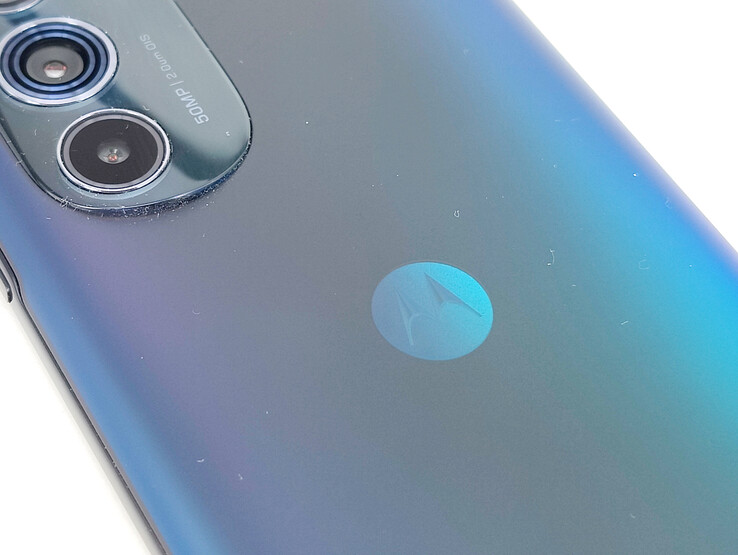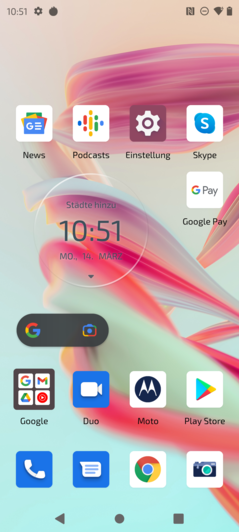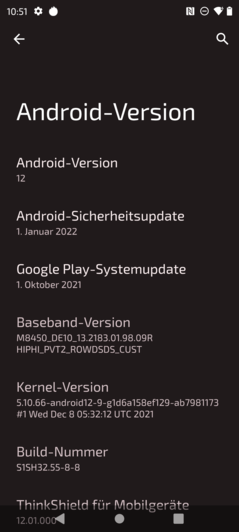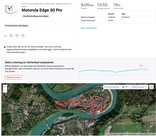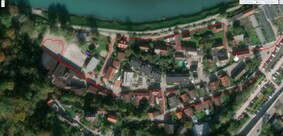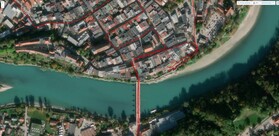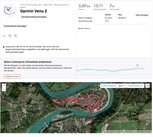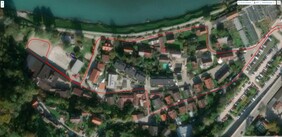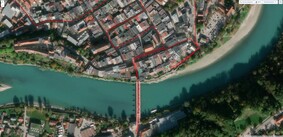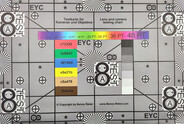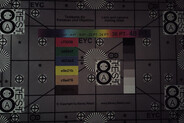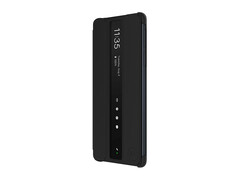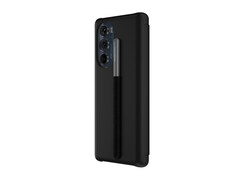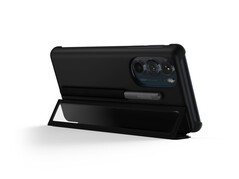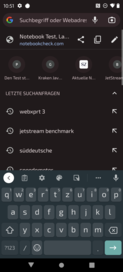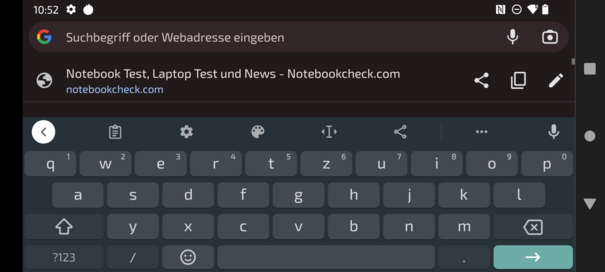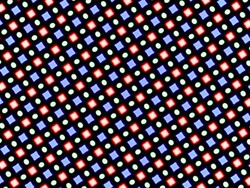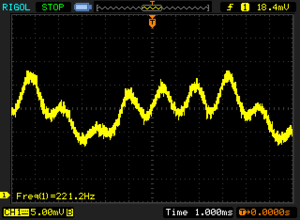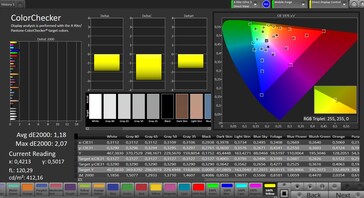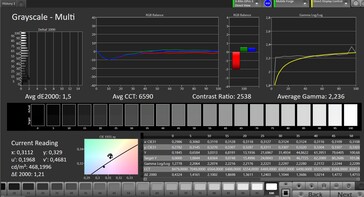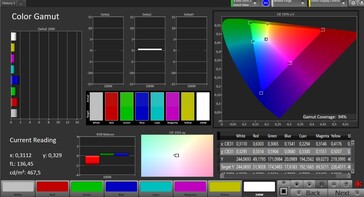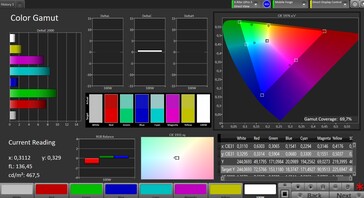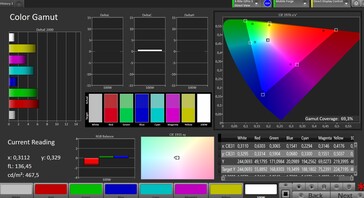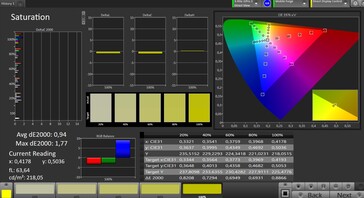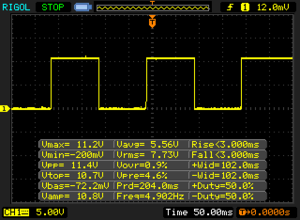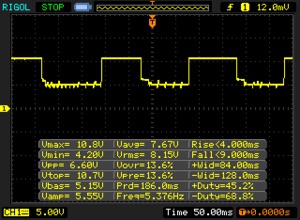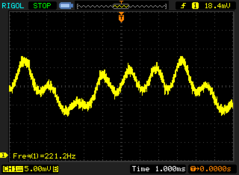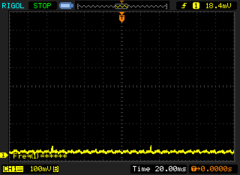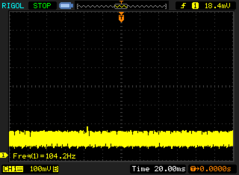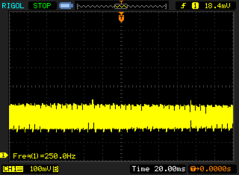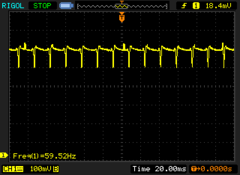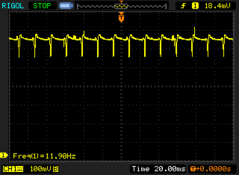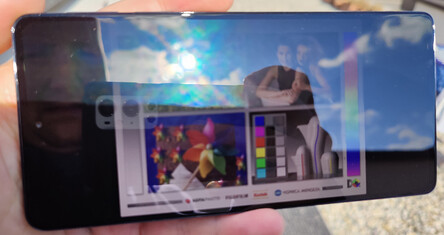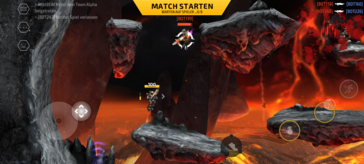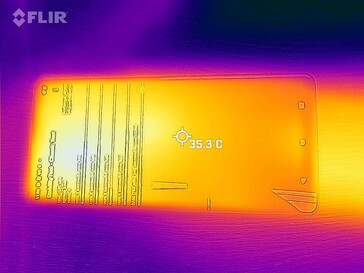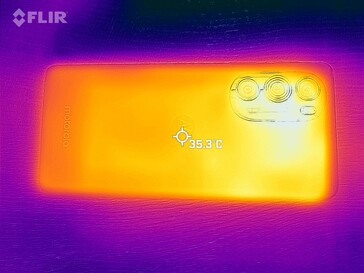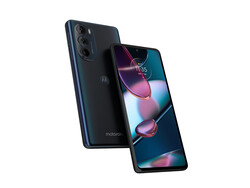Motorola Edge 30 Pro Smartphone Review – An Affordable Flagship, Improved
The Edge 20 Pro has only been around for a short while yet its successor is ready to go. Motorola’s Edge 30 Pro addresses a few of its predecessor’s issues and comes with stereo sound and support for wireless charging as well as a smart stylus including a Folio for the smartphone. In return, it no longer features a periscope zoom as according to Motorola, digital zoom technology has been improved to a point that renders optical zooms obsolete.
Let’s find out whether or not this $1,000 meets our expectations.
Potential Competitors in Comparison
Rating | Date | Model | Weight | Drive | Size | Resolution | Price |
|---|---|---|---|---|---|---|---|
| 87.9 % v7 (old) | 03 / 2022 | Motorola Edge 30 Pro SD 8 Gen 1, Adreno 730 | 196 g | 256 GB UFS 3.1 Flash | 6.70" | 2400x1080 | |
| 87.6 % v7 (old) | 02 / 2022 | Xiaomi 12 Pro SD 8 Gen 1, Adreno 730 | 204 g | 256 GB UFS 3.1 Flash | 6.73" | 3200x1440 | |
| 88.7 % v7 (old) | 10 / 2021 | Apple iPhone 13 A15, A15 GPU 4-Core | 173 g | 128 GB NVMe | 6.10" | 2532x1170 | |
| 88.8 % v7 (old) | 02 / 2022 | Samsung Galaxy S21 FE 5G SD 888 5G, Adreno 660 | 177 g | 128 GB UFS 3.1 Flash | 6.40" | 2340x1080 | |
| 86.9 % v7 (old) | 10 / 2021 | Motorola Edge 20 Pro SD 870, Adreno 650 | 185 g | 256 GB UFS 3.1 Flash | 6.70" | 2400x1080 |
Case – Looking Good, But Why that Plastic Frame?
The smartphone’s rear cover is made of frosted glass that changes color depending on level and angle of light, which makes for a superb premium look and manages to successfully prevent fingerprints.
The two available colors are Cosmos Blue and Stardust White, with the former somewhere between dark green and blue and the latter somewhere between gray and white. The case is well made, and we round no noticeable transitions along the edges.
The middle of the rear cover flexes and creaks slightly, and the power button with included finger print sensor at the right-hand side of the case is a rather mediocre fit. On the one hand we were very clearly able to feel its edges, on the other they are rounded and thus pleasantly tactile.
The frame is once again made of plastic, and at the front we find Gorilla Glass 3. It is here where the limited budget not quite on a par with true high-end devices become most obvious.
With a display size of 6.7 inches and a weight of 196 g (6.9 oz) the Edge 30 Pro is a large and relatively heavy smartphone indeed.
Connectivity – DisplayPort Built-In
European customers are treated primarily to a model with 256 GB of storage and 12 GB of RAM. Other SKUs with 128 GB / 8 GB and 512 GB / 12 GB are also available in select regions.
Just like on the Edge 20 Pro we find a USB-C port at the bottom, which is connected to a USB 3.1 bus with support for DisplayPort 1.4. As before an audio jack is nowhere to be found, which means that you will need to use either a USB-C headset or a USB-C to audio adapter.
The device supports Bluetooth 5.2 as well as NFC, which means that mobile payment systems are supported on this smartphone. It also comes with a total of three microphones.
Software – Pure Vanilla Android 12
By default, the device comes with Android 12 preloaded, which supports customization via different fonts, accent colors, and more. It also supports a reduced location accuracy for specific apps and comes with a privacy dashboard to inspect in detail which apps have been granted which permissions. Motorola promises three years of security updates as well as two major Android updates.
As before the operating system has been left largely untouched by Motorola with only the Moto and the Ready For app preloaded. The only third-party app we found was Facebook.
The device is DRM-certified, which means it supports HD streaming.
Connecting a computer to this smartphone is a breeze, and you can mirror your smartphone display to a larger screen via Chromecast, Miracast, and USB-C. However, Motorola takes this a step further with Ready For, which provides a customized user interface with support for a Bluetooth mouse and keyboard for a full office PC experience. It also allows for mouse cursor movement via smartphone or accessing data on either the connected PC or the smartphone itself.
Communication and GNSS – Future-Proof thanks to 5G and Wi-Fi 6E
The Motorola Edge 30 Pro supports the latest Wi-Fi standard utilizing the 6 GHz band called Wi-Fi 6E as well as older standards, such as Wi-Fi 5 or Wi-Fi 4. When connected to our Asus GT-AXE11000 reference router we managed very good transfer rates of almost 1 Gbps receiving data over Wi-Fi 6E channels. That being said the Xiaomi 12 Pro was quite a bit faster. In other words: Motorola does not utilize the built-in Wi-Fi modem to its max, which could be the result of power efficiency optimizations.
As expected, the Motorola Edge 30 Pro supports 5G, although it lacks support for mmWave and is limited to the slower sub 6GHz. It also supports a variety of 4G frequencies, which means it should be usable abroad and pretty much all over the world. In our tests, 4G connectivity turned out to be on an par or slightly worse than on other high-end smartphones.
| Networking | |
| iperf3 transmit AX12 | |
| Apple iPhone 13 | |
| Motorola Edge 20 Pro | |
| iperf3 receive AX12 | |
| Motorola Edge 20 Pro | |
| Apple iPhone 13 | |
| iperf3 transmit AXE11000 | |
| Xiaomi 12 Pro | |
| Motorola Edge 30 Pro | |
| Samsung Galaxy S21 FE 5G | |
| Average of class Smartphone (49.8 - 1828, n=182, last 2 years) | |
| iperf3 receive AXE11000 | |
| Xiaomi 12 Pro | |
| Motorola Edge 30 Pro | |
| Samsung Galaxy S21 FE 5G | |
| Average of class Smartphone (52 - 1857, n=182, last 2 years) | |
Outdoor GPS accuracy was almost instantaneous and very good at 3 m, and the number of connected satellites was good.
We took the device on a bike trip around the block in order to determine its real-world GPS accuracy, and it proved to be very accurate after some initial minor issues. Overall, we were satisfied with its GPS accuracy and are able to recommend it should this be of importance to you.
Telephony and Call Quality – Edge 30 Pro with Clear Sound
Motorola left the default Android telephone app unchanged, which means you get the standard clean telephone app with support for favorites and contacts. As expected the phone supports both VoLTE and VoWiFi.
Call quality was determined via a number of phone calls, and we liked its earphone and microphone quality. The earphone can get very loud, which is great in environments with high levels of ambient noise. The microphone recorded our voice very clear even if we spoke very quietly. The speakerphone worked very well and without any issues.
Cameras - A Brand-New Concept
Compared to the Edge 20 Pro Motorola changed the camera setup significantly on this new device. Gone are the predecessor’s 108 MP main sensor with 8 MP periscope zoom sensor, which have been replaced with two 50 MP sensors supporting a lossless hybrid zoom between wide-angle and main lens. The new camera also comes with OIS, which was absent on the Motorola Edge 20 Pro.
Motorola’s reasoning for the discontinuation of the periscope zoom is simple: digital zoom technology has improved sufficiently to replace optical zooms. Unfortunately, our tests results speak for themselves, and we found the 10x digital zoom to produce fairly blotchy results while 5x digital zoom was better and okay overall, albeit still nowhere near a true optical zoom.
With a diameter of 1/1.5 inches the camera’s main sensor remains quite large. However, due to its lower resolution it no longer combines 9 pixels into a single pixel but is now limited to just 4. In theory, this should result in a decreased light sensitivity, which we are fortunately unable to attest. In normal lighting conditions the Motorola Edge 30 Pro’s camera produced good photos with decent focus and popping colors.
Without a doubt the 50 MP wide-angle camera is a highlight only seldom to be found in smartphones. Due to its quad-pixel technology its effective resolution is normally limited to just 12 MP but it does also support a full-resolution 50 MP mode. Despite its higher resolution it failed to produce images that were noticeably better than wide-angle photos taken with other high-end smartphones. Bonus point: the wide-angle camera supports a high-quality macro mode.
Videos are recorded in either 8K of 4K with 60 FPS limited to FHD only and HDR-10+ available for 4K/30 FPS mode only. The wide-angle camera records in FHD with 30 FPS but does support zooming in and out while filming. Unfortunately, a single black frame is produced when first switching to the wide-angle camera while filming. Overall video quality is decent, with smooth lighting adjustments and no visible autofocus pulsing.
Image comparison
Choose a scene and navigate within the first image. One click changes the position on touchscreens. One click on the zoomed-in image opens the original in a new window. The first image shows the scaled photograph of the test device.
Hauptkamera PflanzeHauptkamera UmgebungHauptkamera Low LightWeitwinkelkameraIn our lab and under controlled and normalized conditions, the main camera’s focus turned out to be average with a contrast ratio that could have been higher. As a result, some areas turn out gray instead of black. At just 1 lux of light we still managed to make out plenty of details but have to admit that the Motorola Edge 30 Pro’s camera system was unable to keep up with the best of the best.
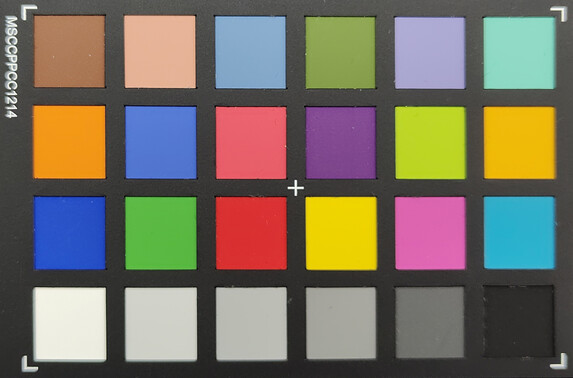
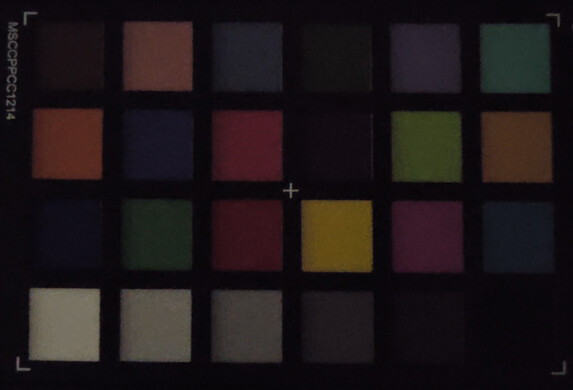
Accessories and Warranty – Folio and Stylus Support
Inside the box we find a charger, a USB-C cable, a SIM tool, and a silicone bumper. A USB-C headset is included in select regions.
The Folio designed specifically for the Edge 30 Pro and the stylus are not going to be available in all countries, with European customers expected to start seeing these around mid-March. Unfortunately, we were not yet able to get our hands on either, and Motorola was unable to provide us with prices. Based on the product images we can say that the Folio leaves a narrow strip for the display and can be used as a built-in stand in landscape mode. The stylus can be stored on the backside of the case.
Input Devices & Handling – Fast and Precise
Thanks to the device’s 144 Hz display with a touch sampling rate of 360 Hz the screen is buttery smooth, very responsive, and very accurate. The overall system performance is very fast resulting in a smooth user experience.
The fingerprint reader is integrated into the power button on the right-hand side. Right-handers will therefore primarily use the thumb for unlocking, left-handers the index finger. The sensor turned out to be very accurate and fast unlocking the phone almost instantaneously even when in standby. An optional face recognition feature is also available. It worked reliably well but is nowhere near as safe as Apple’s FaceID technology due to its implementation in software rather than hardware.
Display – Good, But Not Bright Enough
The display’s FHD+ resolution may not be record-breaking high but standard for its class and certainly high enough for a 6.7-inch display. Accordingly, we had to look very hard to notice individual pixels or any form of aliasing. If you want a higher resolution the Xiaomi 12 Pro might be worth a closer look.
The Edge 30 Pro’s AMOLED display supports HDR 10+ with a maximum brightness of 658 nits. Other smartphones gut much brighter than this if necessary. Since the panel can turn individual pixels off its black level is absolute zero resulting in an infinitely high contrast ratio.
| |||||||||||||||||||||||||
Brightness Distribution: 98 %
Center on Battery: 649 cd/m²
Contrast: ∞:1 (Black: 0 cd/m²)
ΔE ColorChecker Calman: 1.18 | ∀{0.5-29.43 Ø4.79}
ΔE Greyscale Calman: 1.5 | ∀{0.09-98 Ø5}
94% sRGB (Calman 2D)
Gamma: 2.236
CCT: 2538 K
| Motorola Edge 30 Pro AMOLED, 2400x1080, 6.7" | Xiaomi 12 Pro AMOLED, 3200x1440, 6.7" | Apple iPhone 13 OLED, 2532x1170, 6.1" | Samsung Galaxy S21 FE 5G Dynamic AMOLED 2X, 2340x1080, 6.4" | Motorola Edge 20 Pro OLED, 2400x1080, 6.7" | |
|---|---|---|---|---|---|
| Screen | 5% | 23% | -16% | -13% | |
| Brightness middle (cd/m²) | 649 | 959 48% | 831 28% | 758 17% | 666 3% |
| Brightness (cd/m²) | 649 | 977 51% | 830 28% | 758 17% | 644 -1% |
| Brightness Distribution (%) | 98 | 96 -2% | 98 0% | 99 1% | 93 -5% |
| Black Level * (cd/m²) | |||||
| Colorchecker dE 2000 * | 1.18 | 1.1 7% | 0.77 35% | 1.5 -27% | 1.4 -19% |
| Colorchecker dE 2000 max. * | 2.07 | 3.1 -50% | 1.52 27% | 3.1 -50% | 2.65 -28% |
| Greyscale dE 2000 * | 1.5 | 1.9 -27% | 1.2 20% | 2.3 -53% | 1.9 -27% |
| Gamma | 2.236 98% | 2.22 99% | 2.209 100% | 2.06 107% | 2.209 100% |
| CCT | 2538 256% | 6498 100% | 6501 100% | 6378 102% | 6646 98% |
* ... smaller is better
Screen Flickering / PWM (Pulse-Width Modulation)
| Screen flickering / PWM detected | 221.2 Hz | ||
The display backlight flickers at 221.2 Hz (worst case, e.g., utilizing PWM) . The frequency of 221.2 Hz is relatively low, so sensitive users will likely notice flickering and experience eyestrain at the stated brightness setting and below. In comparison: 53 % of all tested devices do not use PWM to dim the display. If PWM was detected, an average of 8156 (minimum: 5 - maximum: 343500) Hz was measured. | |||
With the display set to “Natural” we found colors to be very accurate, with no single color stepping out of line, and very accurate grayscale levels. Our spectrophotometer results using CalMAN point to a 70 % coverage of AdobeRGB and DCI-P3.
As is typical for AMOLED displays, we found PWM flickering. The good news is that it flattened out at 75 % at a consistent 60 Hz, which many people find more pleasant.
Display Response Times
| ↔ Response Time Black to White | ||
|---|---|---|
| 6 ms ... rise ↗ and fall ↘ combined | ↗ 3 ms rise | |
| ↘ 3 ms fall | ||
| The screen shows very fast response rates in our tests and should be very well suited for fast-paced gaming. In comparison, all tested devices range from 0.1 (minimum) to 240 (maximum) ms. » 17 % of all devices are better. This means that the measured response time is better than the average of all tested devices (20.3 ms). | ||
| ↔ Response Time 50% Grey to 80% Grey | ||
| 13 ms ... rise ↗ and fall ↘ combined | ↗ 4 ms rise | |
| ↘ 9 ms fall | ||
| The screen shows good response rates in our tests, but may be too slow for competitive gamers. In comparison, all tested devices range from 0.165 (minimum) to 636 (maximum) ms. » 25 % of all devices are better. This means that the measured response time is better than the average of all tested devices (31.7 ms). | ||
Performance – Graphics Power Galore
Qualcomm’s Snapdragon 8 Gen. 1 comes with 8 cores running at up to 3 GHz. And while it cannot keep up with the Apple A15 the Edge 30 Pro performed very well for an Android smartphone, and it should easily handle demanding applications.
This is particularly important considering the device’s built-in Ready For desktop mode with multiple applications running simultaneously on a large screen with the phone serving as a full-fledged office PC replacement.
In terms of graphics performance, the Edge 30 Pro even managed to outperform the iPhone 13 in some benchmarks. It should thus offer a boatload of power for visually demanding applications.
Web browsing performance was very fast on this smartphone, and the Edge 30 Pro managed to outperform its competitors by quite a significant margin. That being said it was still unable to keep up with Apple’s iPhone 13.
| Jetstream 2 - 2.0 Total Score | |
| Apple iPhone 13 (Safari 15) | |
| Average of class Smartphone (23.8 - 387, n=155, last 2 years) | |
| Motorola Edge 30 Pro (Chrome 99) | |
| Average Qualcomm Snapdragon 8 Gen 1 (72.8 - 134.6, n=16) | |
| Motorola Edge 20 Pro (Chrome 94) | |
| Xiaomi 12 Pro (Chrome 97) | |
| Samsung Galaxy S21 FE 5G (Chrome 96) | |
| JetStream 1.1 - Total Score | |
| Apple iPhone 13 (Safari 15) | |
| Motorola Edge 30 Pro (Chrome 99) | |
| Average Qualcomm Snapdragon 8 Gen 1 (121.9 - 237, n=11) | |
| Motorola Edge 20 Pro (Chrome 94) | |
| Xiaomi 12 Pro (Chrome 97) | |
| Samsung Galaxy S21 FE 5G (Chrome 96) | |
| Speedometer 2.0 - Result 2.0 | |
| Apple iPhone 13 (Safari 15) | |
| Average of class Smartphone (15.2 - 643, n=132, last 2 years) | |
| Motorola Edge 30 Pro (Chome 99) | |
| Average Qualcomm Snapdragon 8 Gen 1 (64.4 - 129.3, n=16) | |
| Xiaomi 12 Pro (Chrome 97) | |
| Motorola Edge 20 Pro (Chrome 94) | |
| Samsung Galaxy S21 FE 5G (Chrome 96) | |
| WebXPRT 3 - Overall | |
| Apple iPhone 13 (Safari 15) | |
| Average of class Smartphone (38 - 380, n=41, last 2 years) | |
| Motorola Edge 30 Pro (Chrome 99) | |
| Average Qualcomm Snapdragon 8 Gen 1 (79 - 193, n=15) | |
| Samsung Galaxy S21 FE 5G (Chrome 96) | |
| Motorola Edge 20 Pro (Chrome 94) | |
| Xiaomi 12 Pro (Chrome 97) | |
| Octane V2 - Total Score | |
| Apple iPhone 13 (Safari 15) | |
| Motorola Edge 30 Pro (Chrome 99) | |
| Average of class Smartphone (2228 - 121337, n=201, last 2 years) | |
| Average Qualcomm Snapdragon 8 Gen 1 (27730 - 50626, n=17) | |
| Motorola Edge 20 Pro (Chrome 94) | |
| Samsung Galaxy S21 FE 5G (Chrome 96) | |
| Xiaomi 12 Pro (Chrome 97) | |
| Mozilla Kraken 1.1 - Total | |
| Samsung Galaxy S21 FE 5G (Chrome 96) | |
| Xiaomi 12 Pro (Chrome 97) | |
| Average of class Smartphone (257 - 28190, n=156, last 2 years) | |
| Motorola Edge 20 Pro (Chrome 94) | |
| Average Qualcomm Snapdragon 8 Gen 1 (814 - 1440, n=16) | |
| Motorola Edge 30 Pro (Chrome 99) | |
| Apple iPhone 13 (Safari 15) | |
* ... smaller is better
As we expect of a true flagship phone the Edge 30 Pro comes with blazingly fast UFS 3.1 storage that outperformed all of its competitors very nicely. It improved even further of its already very fast predecessor.
| Motorola Edge 30 Pro | Xiaomi 12 Pro | Samsung Galaxy S21 FE 5G | Motorola Edge 20 Pro | Average 256 GB UFS 3.1 Flash | Average of class Smartphone | |
|---|---|---|---|---|---|---|
| AndroBench 3-5 | 20% | -22% | -24% | 3% | 27% | |
| Sequential Read 256KB (MB/s) | 1832 | 1620 -12% | 1639 -11% | 1699 -7% | 1757 ? -4% | 2212 ? 21% |
| Sequential Write 256KB (MB/s) | 1028 | 1465 43% | 760 -26% | 723 -30% | 1204 ? 17% | 1835 ? 79% |
| Random Read 4KB (MB/s) | 277.7 | 324.9 17% | 245.1 -12% | 245.7 -12% | 287 ? 3% | 293 ? 6% |
| Random Write 4KB (MB/s) | 339.5 | 448.9 32% | 211.2 -38% | 179.6 -47% | 318 ? -6% | 338 ? 0% |
Gaming – High FPS Gaming Possible
Traditionally, smartphones tend to limit frame rates in mobile games due to battery life concerns. The higher the FPS the higher the battery drain, which might surprise and disappoint inexperienced users. Imagine our surprise when we found out that Motorola opted to support high FPS gaming and some of our GameBench benchmarks, such as for example the arena shooter Armajet, returned over 100 FPS.
Like its predecessor the Edge 30 Pro scored 60 FPS in PUBG Mobile in high settings. What a treat to be finally able to utilize the high-frequency display by enjoying high-FPS gaming.
Emissions – Massive Throttling under Load
Temperature
Under load, the device warmed up to 44 °C. This, while noticeably warm, was nowhere near unpleasant or critical. It could, however, become uncomfortable when exposed to higher ambient temperatures.
In addition, the device found it necessary to thermal throttle under sustained load. After 20 loops of our 3DMark Wild Life stress test we found the Edge 30 Pro to achieve a meagre 60 % of its initial performance. And while many other high-end smartphones suffer a similar fate the Edge 20 Pro managed to maintain a consistent performance over long periods of sustained load without breaking a sweat.
(±) The maximum temperature on the upper side is 44 °C / 111 F, compared to the average of 35.2 °C / 95 F, ranging from 21.9 to 247 °C for the class Smartphone.
(±) The bottom heats up to a maximum of 41.3 °C / 106 F, compared to the average of 34 °C / 93 F
(±) In idle usage, the average temperature for the upper side is 32.4 °C / 90 F, compared to the device average of 32.9 °C / 91 F.
3DMark Wild Life Stress Test
| 3DMark | |
| Wild Life Stress Test Stability | |
| Motorola Edge 20 Pro | |
| Apple iPhone 13 | |
| Samsung Galaxy S21 FE 5G | |
| Motorola Edge 30 Pro | |
| Xiaomi 12 Pro | |
| Wild Life Extreme Stress Test | |
| Motorola Edge 20 Pro | |
| Apple iPhone 13 | |
| Motorola Edge 30 Pro | |
| Samsung Galaxy S21 FE 5G | |
| Xiaomi 12 Pro | |
Speaker
Unlike on last year’s Edge 20 Pro our review unit supports stereo sound, and what sound scape it was! The well-balanced speakers get very loud and offer very decent low mids, and the entire device reverberates with heavy bass. Obviously, no smartphone can replace a sound system with dedicated subwoofer, but for a smartphone it turned out to sound surprisingly good.
External audio devices must be connected via USB-C or Bluetooth for additional oomph, and the device supports all current aptX codecs as well as LDAC and LHDC.
Motorola Edge 30 Pro audio analysis
(+) | speakers can play relatively loud (90.3 dB)
Bass 100 - 315 Hz
(-) | nearly no bass - on average 22.6% lower than median
(±) | linearity of bass is average (10.1% delta to prev. frequency)
Mids 400 - 2000 Hz
(+) | balanced mids - only 4.2% away from median
(+) | mids are linear (5.6% delta to prev. frequency)
Highs 2 - 16 kHz
(±) | higher highs - on average 5.5% higher than median
(+) | highs are linear (5% delta to prev. frequency)
Overall 100 - 16.000 Hz
(±) | linearity of overall sound is average (18.8% difference to median)
Compared to same class
» 21% of all tested devices in this class were better, 10% similar, 69% worse
» The best had a delta of 11%, average was 35%, worst was 134%
Compared to all devices tested
» 42% of all tested devices were better, 8% similar, 50% worse
» The best had a delta of 4%, average was 24%, worst was 134%
Motorola Edge 20 Pro audio analysis
(+) | speakers can play relatively loud (82.8 dB)
Bass 100 - 315 Hz
(-) | nearly no bass - on average 25.2% lower than median
(±) | linearity of bass is average (12.5% delta to prev. frequency)
Mids 400 - 2000 Hz
(±) | higher mids - on average 5.1% higher than median
(±) | linearity of mids is average (7.1% delta to prev. frequency)
Highs 2 - 16 kHz
(+) | balanced highs - only 3.9% away from median
(+) | highs are linear (6.1% delta to prev. frequency)
Overall 100 - 16.000 Hz
(±) | linearity of overall sound is average (19.5% difference to median)
Compared to same class
» 27% of all tested devices in this class were better, 8% similar, 64% worse
» The best had a delta of 11%, average was 35%, worst was 134%
Compared to all devices tested
» 47% of all tested devices were better, 7% similar, 45% worse
» The best had a delta of 4%, average was 24%, worst was 134%
Battery Life – Please, May I Have Some More?
Power Consumption
The Edge 30 Pro turned out to be anything but power efficient, and it consumed a maximum of 10.4 W in our power consumption tests with even higher peaks while running GFXBench or Geekbench. It was also not the most efficient device when idle.
| Off / Standby | |
| Idle | |
| Load |
|
Key:
min: | |
| Motorola Edge 30 Pro 4800 mAh | Xiaomi 12 Pro 4600 mAh | Apple iPhone 13 3240 mAh | Samsung Galaxy S21 FE 5G 4500 mAh | Motorola Edge 20 Pro 4500 mAh | Average Qualcomm Snapdragon 8 Gen 1 | Average of class Smartphone | |
|---|---|---|---|---|---|---|---|
| Power Consumption | 20% | 35% | 13% | 39% | -2% | 6% | |
| Idle Minimum * (Watt) | 1.2 | 0.94 22% | 0.6 50% | 1.01 16% | 0.7 42% | 1.255 ? -5% | 0.853 ? 29% |
| Idle Average * (Watt) | 1.6 | 1.24 22% | 1 37% | 1.5 6% | 0.9 44% | 2.02 ? -26% | 1.43 ? 11% |
| Idle Maximum * (Watt) | 2.5 | 1.34 46% | 1.3 48% | 1.6 36% | 1.2 52% | 2.21 ? 12% | 1.609 ? 36% |
| Load Average * (Watt) | 5.2 | 5.7 -10% | 4.5 13% | 5.54 -7% | 4.6 12% | 5.49 ? -6% | 7.09 ? -36% |
| Load Maximum * (Watt) | 10.4 | 8.12 22% | 7.8 25% | 9.16 12% | 5.5 47% | 8.75 ? 16% | 11.2 ? -8% |
* ... smaller is better
Power Consumption: Geekbench (150 cd/m²)
Power Consumption: GFXBench (150 cd/m²)
Battery Life
The battery is 300 mAh larger than the Edge 20 Pro's, resulting in overall improved battery life that is finally at a level acceptable for this class. It lasted for 13:36 hours in our Wi-Fi test while browsing the web, a result that could have been further improved with a fixed 60 Hz refresh rate as well as additional power saving modes. It also performed very well under load, which was no surprise given its tendency to thermal throttle very fast.
The power supply is rated at 68 W, and the device can be charged to 50 % in 15 minutes according to Motorola, which we are able to attest after running our own tests. Charging from near empty to full takes less than an hour. The Edge 20 Pro now also supports Qi wireless charging with up to 15 W, and reverse wireless charging with up to 5 W.
| Motorola Edge 30 Pro 4800 mAh | Xiaomi 12 Pro 4600 mAh | Apple iPhone 13 3240 mAh | Samsung Galaxy S21 FE 5G 4500 mAh | Motorola Edge 20 Pro 4500 mAh | |
|---|---|---|---|---|---|
| Battery runtime | -4% | 21% | -9% | -7% | |
| Reader / Idle (h) | 33.1 | 33.9 2% | 45.6 38% | 23.8 -28% | 28.2 -15% |
| H.264 (h) | 16.8 | 13.1 -22% | 20.4 21% | 15.6 -7% | 21.5 28% |
| WiFi v1.3 (h) | 13.6 | 12.8 -6% | 17 25% | 9.9 -27% | 12.9 -5% |
| Load (h) | 5.1 | 5.6 10% | 5 -2% | 6.5 27% | 3.3 -35% |
Pros
Cons
Verdict – Various Improvements and a Brand-New Camera Array
Kudos! Motorola managed to address nearly every single issue we had with the Edge 20 Pro. And there’s more! More performance, long-lasting updates, pure vanilla Android 12, a good-looking case, fast Wi-Fi 6E, wide LTE and 5G frequency support, great stereo speakers, and accurate location services.
And while we admittedly liked the Motorola Edge 30 Pro a lot it is not perfect by any means. Its heat emissions are higher than before resulting in unprecedented thermal throttling under sustained load. In addition, we would have expected more than a simple plastic frame from a $1,000 smartphone.
The new camera array introduces a new concept than before. While the predecessor featured a lower-resolution periscope camera with optical zoom the Edge 30 Pro comes with a high-resolution wide-angle with macro mode and a 10x digital zoom of rather questionable couleur. This combined with the many restrictions for recording videos simply don’t befit a true high-end smartphone.
Motorola’s Edge 30 Pro is a significantly improved high-end smartphone with an interesting yet not quite well-thought-out camera array.
Nevertheless, the Motorola Edge 30 Pro is a great high-end smartphone at an acceptable price that managed to offer plenty of pros, great performance, and great speakers, and it will certainly find many fans.
Price and Availability
As with its predecessor, Motorola is not selling the Edge 30 Pro in North America. International unlocked GSM-only versions are available on Amazon starting at around $1,000.
Motorola Edge 30 Pro
- 08/30/2022 v7 (old)
Florian Schmitt





